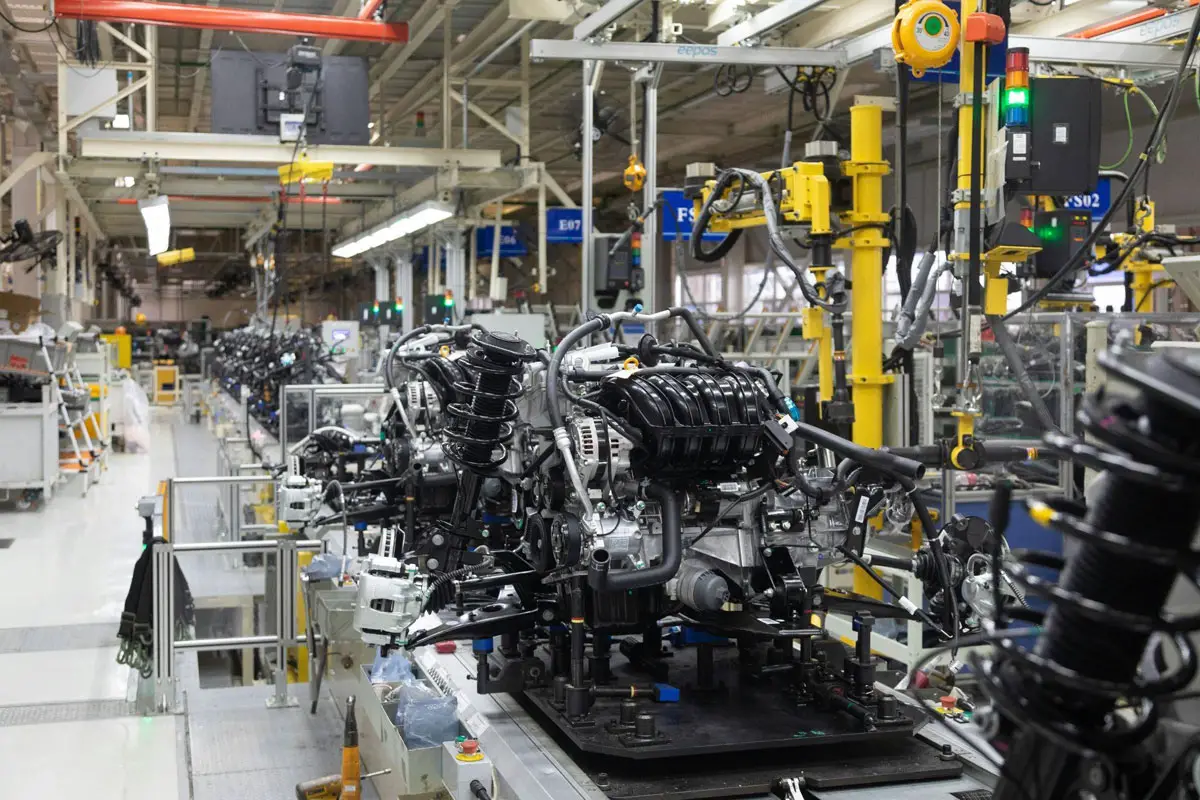The Future of Smart Vehicles: Exploring Trends, Challenges, and Regulations Shaping Mobility

Smart vehicles are no longer a distant dream—they’re rapidly becoming an integral part of our lives. From self-driving cars to connected systems that enhance safety and convenience, the automotive industry is undergoing a revolutionary transformation. But with innovation comes a host of challenges, from technological hurdles to regulatory complexities, that we need to navigate carefully.
As we embrace this shift, it’s crucial to understand the trends shaping the future of smart vehicles. These developments not only promise a smarter, more efficient future but also raise critical questions about privacy, security, and infrastructure.
By exploring these trends, challenges, and regulations, we can better prepare for a future where smart vehicles redefine how we move and connect. Let’s dive into what lies ahead.
Overview Of Smart Vehicles
Smart vehicles integrate advanced technologies like artificial intelligence, IoT, and machine learning to enhance the driving experience. These systems enable features such as adaptive cruise control, lane-keeping assistance, and autonomous driving. By connecting to external infrastructure and other vehicles, smart cars improve safety and optimise traffic flow.
Self-driving technology represents the most significant leap in smart vehicle innovation. Levels of autonomy range from Level 1 (driver assistance) to Level 5 (full automation). As of now, most vehicles on the road operate between Levels 1 and 3. Companies like Tesla, Waymo, and Ford are advancing autonomous capabilities, aiming for wider deployment in urban and highway environments.
Connectivity in smart vehicles involves Vehicle-to-Everything (V2X) communication. V2X allows integration with road systems, such as traffic signals and parking facilities. This connectivity relies on 5G networks, which provide the low latency and high-speed communication needed for real-time data exchange.
Electric vehicles (EVs) are a growing segment of the smart vehicle market. Features like AI-powered battery management and regenerative braking systems align with global sustainability goals. Policies supporting EV adoption help reduce both greenhouse gas emissions and reliance on fossil fuels.
Beyond vehicle technology, financial literacy is also crucial in modern workplaces. For instance, employees often come across terms like kmtchtr on pay stub and seek clarity on payroll deductions, benefits, and tax-related details. Understanding these terms helps individuals manage their finances more effectively while navigating an evolving job market.
Although not directly relevant to smart vehicles, questions like are radar jammers illegal highlight ongoing discussions about the legality of certain vehicle technologies. These debates reflect the complex intersection of innovation and regulation, shaping the broader automotive landscape.
Smart vehicles are designed to adapt to a world where urbanisation and demand for mobility services continue to rise. By integrating sensors, data analysis, and cloud computing, these vehicles improve safety while contributing to efficient transportation systems.
Emerging Trends In Smart Vehicle Technology
Smart vehicle technology continues to evolve, shaped by innovation across connectivity, sustainability, and automation. These advancements redefine how vehicles interact, adapt, and perform in modern environments.
Autonomous Driving
Autonomous driving represents one of the most transformative trends in vehicle technology. Level 4 and 5 autonomy development is progressing, with major players like Tesla and Waymo deploying advanced AI-driven systems. These systems combine LIDAR, radar, cameras, and deep learning to navigate complex urban routes without human intervention. One example is Waymo’s fully driverless rides in specific city zones.
Regulatory support remains crucial for large-scale implementation. Policies addressing safety, data privacy, and ethical considerations are being developed globally to align with technological growth. In addition, edge computing integration is helping reduce latency issues during navigation. As these systems evolve, autonomous vehicles are becoming safer and more reliable, paving the way for widespread adoption.
Vehicle-to-Everything (V2X) Communication
V2X communication enables smart vehicles to interact with infrastructure, devices, and other vehicles. Equipped with short-range communication technologies and 5G networks, cars can exchange data in real time. For instance, traffic light coordination, collision alerts, and road hazard information enhance road safety and traffic management.
Several cities, including those implementing intelligent transportation systems, are adopting V2X frameworks to minimise congestion and optimise energy consumption. Cybersecurity concerns, particularly in preventing unauthorised access or data breaches, are central to V2X integration. Advances in encryption protocols and secure data exchange are vital for protecting sensitive information and ensuring reliable communication networks.
Electric And Sustainable Solutions
Electric vehicles (EVs) now dominate discussions surrounding sustainable transport. Smart EVs incorporate features like regenerative braking, over-the-air updates, and enhanced battery-management systems. Tesla and Rivian, among others, are leading innovations for longer ranges and faster charging.
Government incentives, such as tax benefits and tighter emissions regulations, support EV adoption in line with reducing carbon footprints. Many automakers are committing to zero-emission models by the 2030s. Renewable energy integration, particularly charging through solar grids, further augments eco-friendly goals. These solutions align with global sustainability objectives, offering a practical pathway to greener transportation systems.
Key Challenges Facing Smart Vehicles
Smart vehicles face several challenges that hinder widespread adoption. These issues span safety, infrastructure, and cost considerations that impact their development and practical use.
Safety And Security Concerns
Ensuring the safety and security of smart vehicles involves addressing both cyber threats and functional reliability. Autonomous systems rely on vast networks of sensors, AI, and Vehicle-to-Everything (V2X) communication, creating vulnerabilities to hacking. Cyberattacks on vehicle systems could lead to compromised control or data breaches, endangering drivers and other road users.
Functional safety is another significant concern. Advanced Driving Assistance Systems (ADAS) and autonomous features must operate flawlessly under all conditions to prevent accidents caused by malfunctions or system incompatibilities. Regulatory agencies are exploring mandatory cybersecurity frameworks and rigorous system testing to ensure safer smart vehicle deployments.
Infrastructure Limitations
Smart vehicle functionality depends heavily on robust infrastructure, including 5G networks, sensor-enabled roadways, and charging stations for electric vehicles (EVs). In regions with underdeveloped infrastructure, connectivity shortfalls can impair systems like V2X communication, reducing the efficacy of traffic management and navigation features.
The expansion of EVs introduces additional challenges with charging infrastructure. Insufficient charging stations or outdated power grids create barriers for electric smart vehicles, especially in rural areas. Governments and private stakeholders are pursuing infrastructure upgrades and investments to bridge these gaps and improve compatibility with future smart transportation systems.
Cost And Accessibility
The high costs of developing and producing smart vehicles limit their affordability for many consumers. Advanced components such as LIDAR, radar systems, and AI-driven processors contribute to elevated production expenses. Additionally, integrating sustainable technologies like EV batteries further increases the price point.
Accessibility is another concern, particularly in low-income regions where consumers may lack the resources to adopt these technologies. Addressing cost-sensitive markets involves scaling manufacturing, enhancing efficiency, and leveraging subsidies or incentives to reduce ownership barriers. Encouraging shared mobility options like autonomous ridesharing fleets can also improve accessibility without requiring individual ownership.
The Role Of Regulations In Shaping The Industry
Smart vehicles follow a unique trajectory, with regulations playing a significant role in their development. Policies define compliance standards for safety, data usage, and market accessibility.
Current Regulatory Landscape
Present regulations focus on balancing innovation with public safety. The National Highway Traffic Safety Administration (NHTSA) in the US sets guidelines for autonomous vehicles, emphasising crashworthiness, system reliability, and cybersecurity measures. The European Union adopts similar frameworks, implementing General Safety Regulations (GSR) that mandate features like emergency lane-keeping systems and intelligent speed assistance.
Data privacy regulations like the General Data Protection Regulation (GDPR) in Europe and California Consumer Privacy Act (CCPA) in the US shape how vehicle data is collected and processed. Network safety, including restrictions against unauthorised devices like radar jammers, ensures compliance with communication technology standards critical for Vehicle-to-Everything (V2X) systems. These laws create a foundation for building public trust in autonomous systems and interconnected vehicles.
Future Policies And Standards
Future regulations will adapt to emerging technologies in autonomous and electric vehicles. Policymakers are expected to standardize global safety protocols to streamline cross-border operations, addressing challenges linked to Level 4 or Level 5 autonomous driving. The introduction of ethical AI frameworks may govern decision-making algorithms, focusing on pedestrian safety and equitable usage.
Environmental policies are expected to include stricter emissions regulations, incentivising zero-emission vehicle production to meet sustainability goals by 2030. Infrastructure laws will likely prioritise building charging networks and deploying 5G tech to support V2X systems. Governments may mandate real-time data-sharing protocols across manufacturers, furthering transparency in autonomous operations. Legislative advancements in these domains can accelerate smart vehicle integration across global markets.
The Road Ahead For Smart Vehicles
Advances in autonomous technology and AI are driving innovation, while governments and organisations worldwide are working to establish frameworks for safe and ethical deployment. Smart vehicles are set to redefine mobility by integrating connectivity, autonomy, and sustainability into transportation systems. Their evolution offers groundbreaking advancements but also presents challenges affecting society and industries.
Innovations And Opportunities
Autonomous systems are advancing with enhanced algorithms and sensors, enabling smarter decision-making. Technologies like AI-powered vision systems, 5G-enabled V2X communication, and quantum computing promise greater safety and operational efficiency. Emerging electric vehicle (EV) platforms incorporate solid-state batteries and wireless charging to boost energy density and reduce charging times. Companies are investing in shared autonomous fleets to address congestion and urban transportation, integrating ride-hailing applications with vehicle intelligence.
Opportunities also lie in data-driven technologies. Real-time analytics from connected vehicles can improve traffic flow, streamline logistics, and reduce emissions. Partnerships between tech firms and automakers are fostering rapid innovation. Regulatory support aligning with these innovations could accelerate deployment, providing compliance with standards for security and data privacy, like GDPR, remains a focal point.
Potential Impacts On Society And Economy
Smart vehicles could revolutionise urban planning by reducing traffic congestion and optimising public transport systems. Lower accident rates and fuel efficiency improvements are likely to reshape transportation-related expenditure for both individuals and governments. Employment shifts may emerge as automated logistics and ride-sharing growth reduce demand for conventional drivers but create opportunities in software development, cybersecurity, and infrastructure support.
The economy could see significant supply chain optimisation using smart fleets with real-time communication networks, cutting delays and costs. For societies, improved mobility access can empower underserved and aging populations, creating inclusivity in transportation. However, ethical concerns surrounding job displacement, data ownership, and the environmental costs of manufacturing remain key challenges as automakers and authorities work collaboratively to address them.










